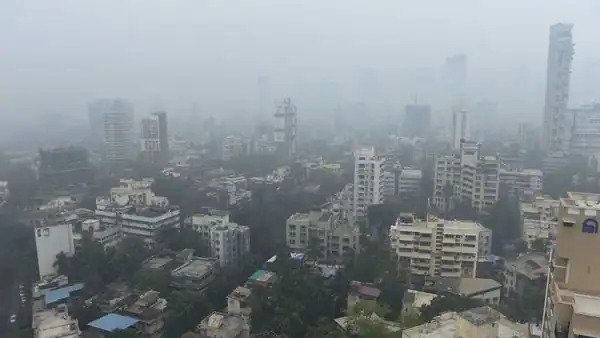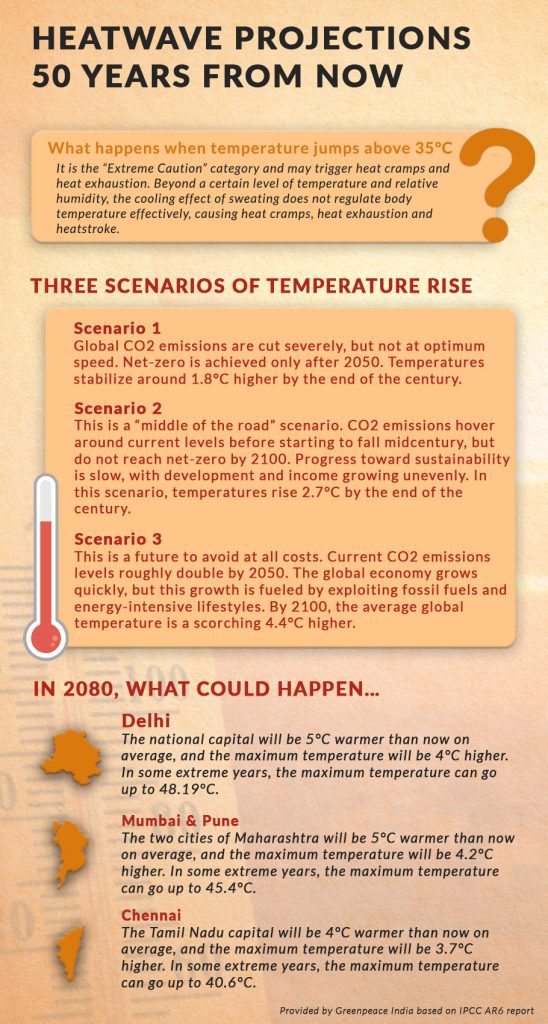
CO2 emissions are warming cities; know how hot your city will be in 2080
The hottest days have increased from 40 days per year in the 1950s to 100 days in the 2020s, says a Greenpeace India report

The temperature in Delhi, and also in most Indian cities, will increase by 4°C on average, by the end of the century, which means unprecedented and prolonged heatwaves, extreme weathers, increased hospitalisations even leading up to fatalities and more disastrous impacts on agriculture and wildlife risking our food and nutritional security, a Greenpeace India report states.
Multiple climate models have projected that the scenario will worsen significantly with CO2 emissions set to double by 2050, the NGO stated.
More heatwaves in the offing
The hottest days for India have increased from 40 days per year in the 1950s to 100 days in the 2020s. This sharp increase and a heat index of over 35 degrees Celsius has significant health impacts that the population is already experiencing.
Summers in India are hot, particularly in inland areas without the regulation from the oceans. Although it is not uncommon for maximum temperatures to exceed 35 degrees Celsius in May, the consistently worsening trend of very hot days is worrying.
The Greenpeace India assessment is based on distinctive scenarios of Intergovernmental Panel for Climate Change (IPCC) AR6 report. The projections in the scenario where CO2 emissions double by 2050 (SSP5-8.5), reveal that Delhi’s maximum temperature will be 4oC higher than the average in the 2080-2099 period. In the same period Delhi’s average temperature will be 5 degrees warmer than now with a maximum temperature that can reach 48.19 degrees C.
The national capital’s recent heatwave recorded 43°C on April 29, 2022 which is well above its average maximum temperature for the month of April. Analysis of the historical daily temperature for April from 1970-2020 suggests that only four years have recorded a value higher than 43°C.
Such a drastic and rapid increase in temperature will mean India will experience more unprecedented and prolonged heatwaves, extreme weathers, increased hospitalizations even leading up to fatalities and irreparable damage to agriculture and wildlife risking our food and nutritional security.
“The heatwaves are fatal for public health and the economy. It also puts ecosystems at risk. We have enough science to link such extreme weather events to climate change. Unfortunately, if we do not act now, the threat is only going to increase in frequency, duration and magnitude,” said Avinash Chanchal, Campaign Manager, Greenpeace India.

Vulnerable communities will suffer the most
Unfortunately, as always, it will be the vulnerable communities who will face the crisis at its worst form. The most vulnerable populations, including the urban poor, outdoor workers, women, children, senior citizens, sexual minorities etc. are at a significantly greater risk, as they lack adequate access to protective measures.
The report suggests that governments must fortify the resilience of such vulnerable populations by immediately providing aid in a just and equitable manner. State and city authorities must strengthen the public health system, and coordinate with meteorological agencies to relay timely warnings and advisories to citizens.
Mitigation measures
As long term measures, urban planning must provide for and maintain adequate green cover which includes rooftop gardening, community nutritional gardens, parks, mini forests, road-side tree plantations and water bodies.
Additionally, governments, corporations, and civil society must prioritize just transition in energy, transport, agriculture, and other sectors to tackle climate change.
Reducing the CO2 emissions, such as shifting into renewables and phasing out internal combustion engines, contribute to reducing the rate of warming in the long run. Phasing out fossil fuels, particularly for energy and transportation systems, is the most practical and immediate solution to tackling climate change and protecting public health. If we do not act now, the threat is only going to amplify in frequency, duration, and magnitude.


